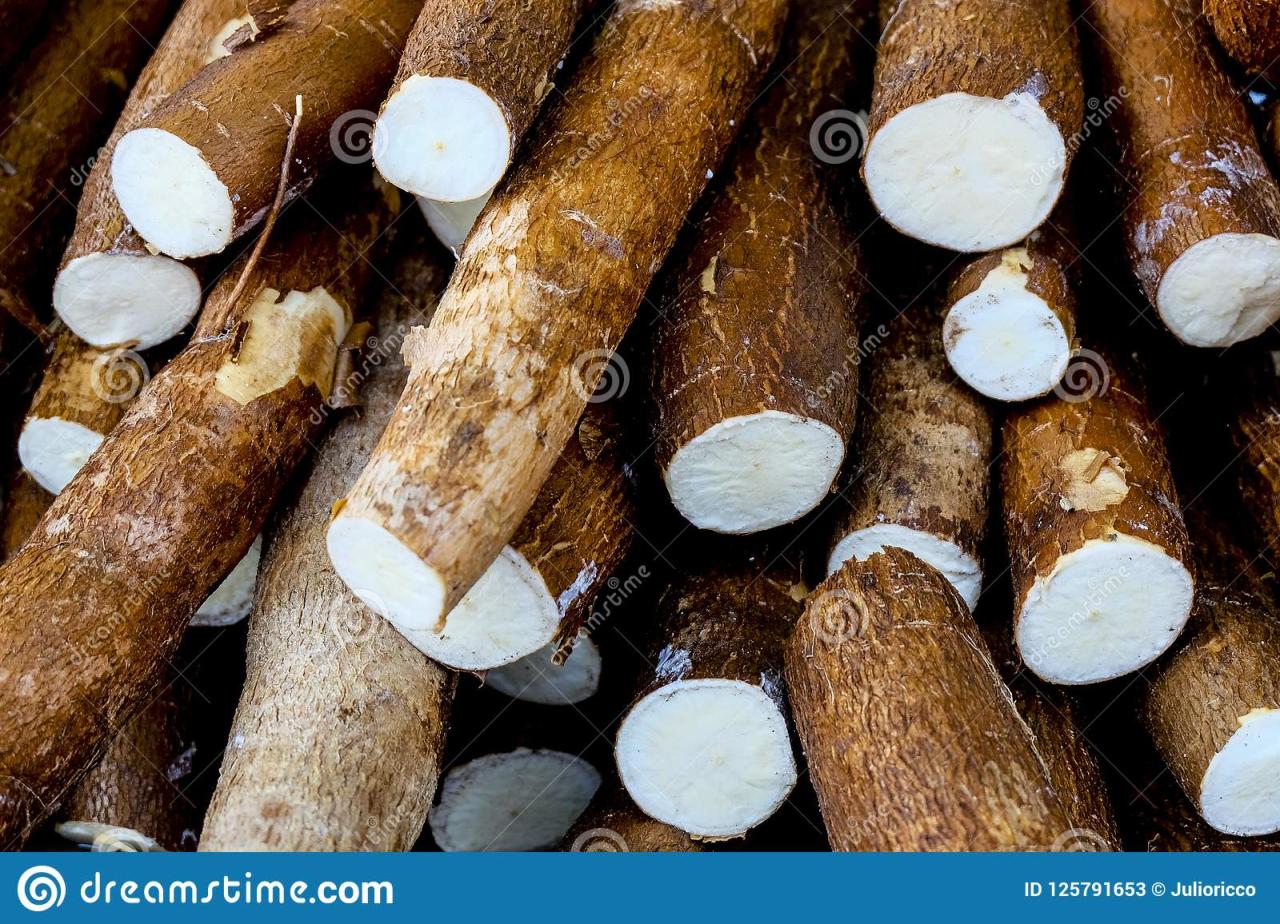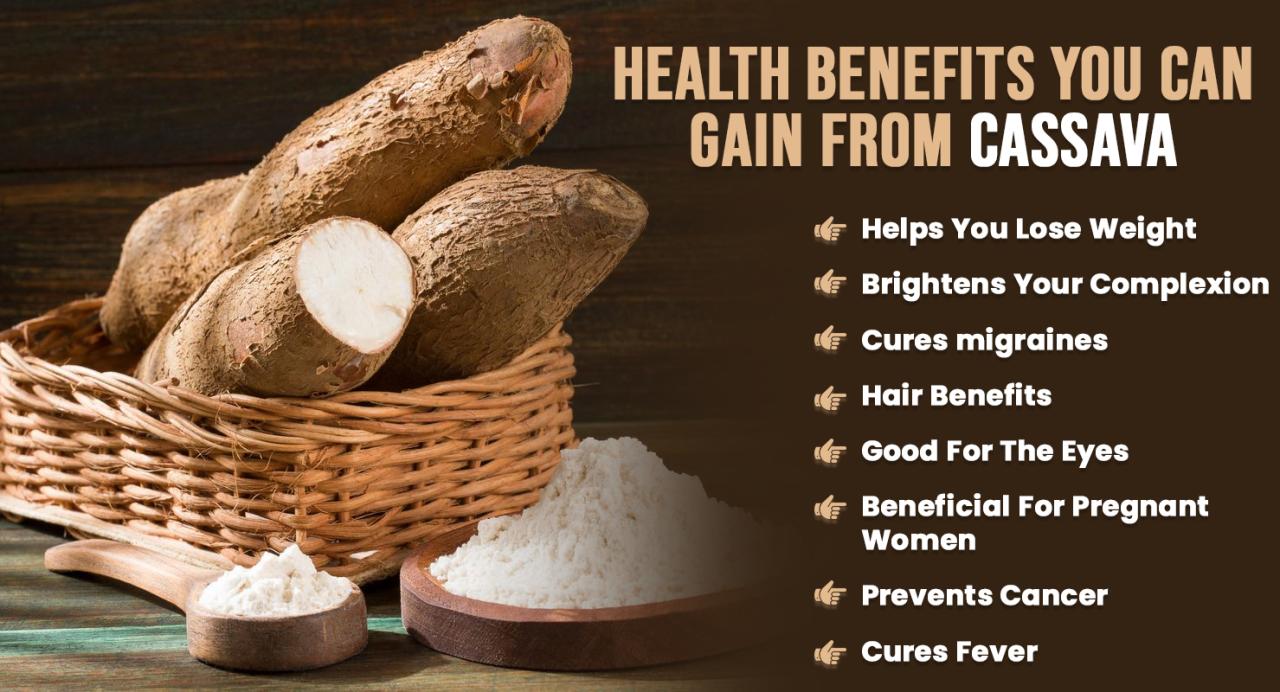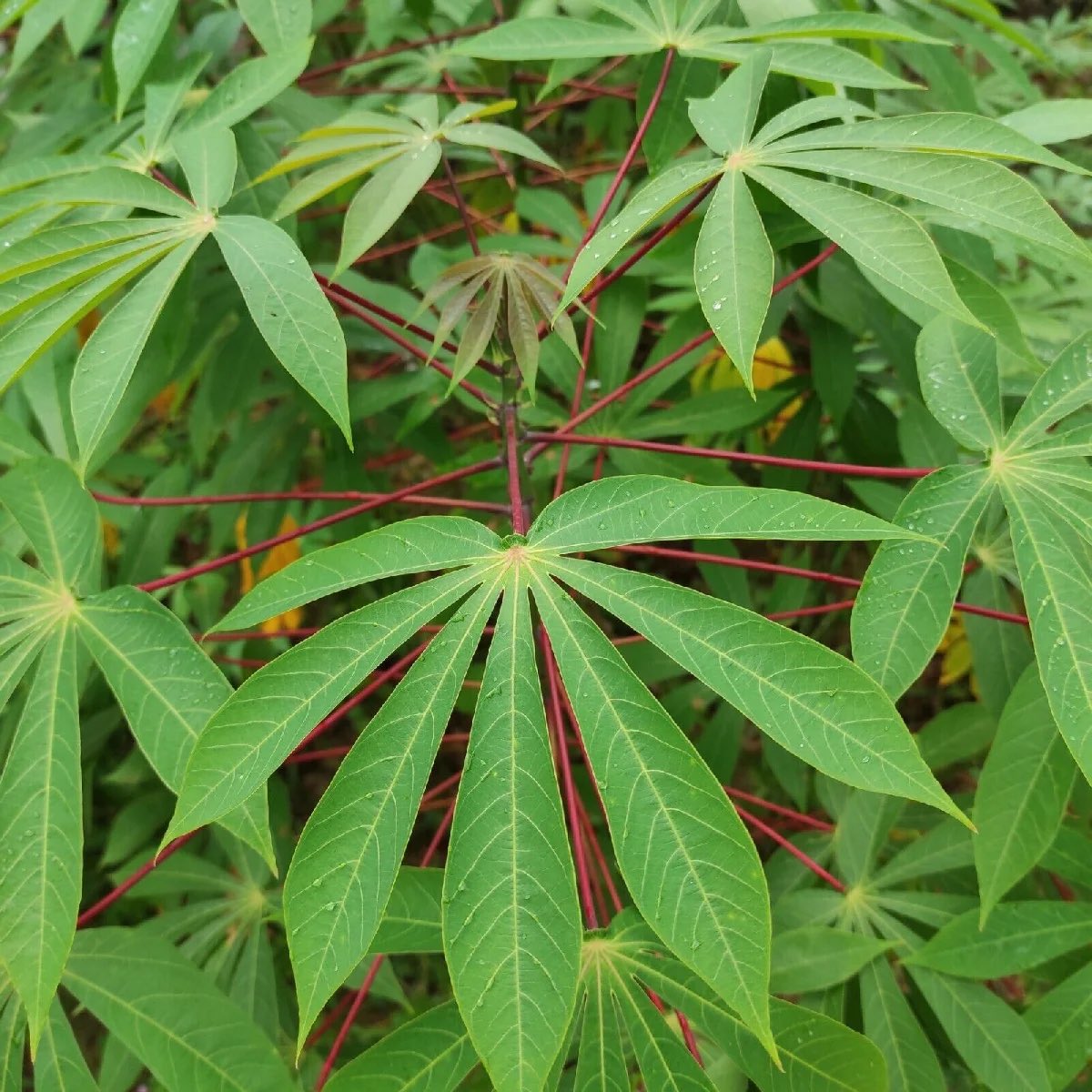Cassava Leaf Benefits: How to Cook and Enjoy This Versatile and Nutritious Green, a leafy green often overlooked, holds a wealth of nutritional value and culinary potential. This vibrant green, known by various names like “Manihot esculenta” or “yuca leaves,” has been a staple in many cultures for centuries, offering a delicious and nutritious addition to meals.
From its rich vitamin and mineral content to its versatile culinary applications, cassava leaves are gaining recognition as a superfood.
Beyond its nutritional benefits, cassava leaves play a significant role in various cuisines worldwide. Across Africa, Asia, and Latin America, these leaves are transformed into flavorful dishes that have been passed down through generations. This article delves into the fascinating world of cassava leaves, exploring their health benefits, culinary uses, and how to enjoy them in your own kitchen.
Introduction to Cassava Leaves
Cassava leaves, also known as Manihot esculenta, are a versatile and nutritious green leafy vegetable that is widely consumed in many parts of the world. They are a rich source of essential vitamins, minerals, and antioxidants, making them a valuable addition to a healthy diet.
Cassava leaves are particularly known for their high content of vitamin A, vitamin C, iron, and calcium. They are also a good source of dietary fiber, which is beneficial for digestive health. The presence of antioxidants in cassava leaves may help protect against cell damage and reduce the risk of chronic diseases.
Cultural Significance of Cassava Leaves
Cassava leaves play a significant role in the culinary traditions of many cultures. In Africa, cassava leaves are a staple food and are often cooked in stews, soups, and other dishes. They are also a popular ingredient in various Asian cuisines, particularly in Southeast Asia.
In South America, cassava leaves are commonly used in traditional dishes, and they are known as “taioba” in Brazil.
History of Cassava Leaf Consumption
Cassava leaves have been consumed for centuries, with evidence suggesting their use dating back to ancient times. The indigenous peoples of South America and Africa have long recognized the nutritional value of cassava leaves and have incorporated them into their diets.
Traditionally, cassava leaves were often used as a source of protein and vitamins, particularly in areas where other food sources were scarce.
Health Benefits of Cassava Leaves

Cassava leaves, a staple in many African and South American cuisines, are not just a delicious green but also a powerhouse of nutrients. Packed with vitamins, minerals, and antioxidants, these leaves offer a wide range of health benefits.
Improved Digestion
Cassava leaves are an excellent source of dietary fiber, which plays a crucial role in maintaining a healthy digestive system. Fiber adds bulk to stools, promoting regular bowel movements and preventing constipation. It also helps in the growth of beneficial bacteria in the gut, contributing to overall digestive health.
Boosted Immunity
Cassava leaves are rich in vitamin C, a potent antioxidant that strengthens the immune system. Vitamin C helps in the production of white blood cells, which are essential for fighting infections. Additionally, the presence of other antioxidants, such as flavonoids and carotenoids, further enhances the immune-boosting properties of cassava leaves.
Cassava leaves, a nutritional powerhouse, are a versatile ingredient that can be enjoyed in various dishes. From stir-fries to soups, their unique flavor and texture add depth to any meal. To maximize the benefits of this leafy green, it’s essential to understand the best practices for cultivating cassava plants.
For a comprehensive guide on how to cultivate cassava leaves successfully, check out this informative article: How to Cultivate Cassava Leaf Successfully: A Comprehensive Guide for Gardeners. With proper cultivation techniques, you can ensure a bountiful harvest of these nutritious leaves, allowing you to enjoy their culinary and health benefits year-round.
Reduced Risk of Chronic Diseases
The antioxidants present in cassava leaves help protect the body against oxidative stress, a major contributor to chronic diseases like heart disease, cancer, and diabetes. Studies have shown that the consumption of foods rich in antioxidants can lower the risk of developing these diseases.
Potential Role in Managing Anemia
Cassava leaves are a good source of iron, an essential mineral for the production of red blood cells. Anemia, a condition characterized by a deficiency of red blood cells, can be caused by iron deficiency. Consuming cassava leaves regularly can help increase iron levels in the body and potentially manage anemia.
Potential Role in Managing Diabetes
Some research suggests that cassava leaves may have potential benefits for managing diabetes. Studies have shown that compounds present in cassava leaves can help regulate blood sugar levels. However, more research is needed to confirm these findings and determine the optimal dosage for managing diabetes.
Cooking with Cassava Leaves
Cassava leaves, a staple in many African and South American cuisines, offer a world of culinary possibilities. Their unique flavor and texture lend themselves to a variety of cooking methods, resulting in dishes that are both delicious and nutritious.
Cassava Leaf Recipes from Around the World
Exploring the diverse culinary traditions that utilize cassava leaves reveals a fascinating array of recipes, each showcasing unique ingredients and preparation techniques. Here’s a glimpse into some popular cassava leaf dishes from different cultures:
Dish |
Culture |
Ingredients |
Preparation Method |
|---|---|---|---|
Egusi Soup |
Nigerian |
Cassava leaves, egusi seeds, beef, fish, stock, palm oil, spices |
The leaves are boiled until tender, then added to a flavorful soup made with egusi seeds, meat, and spices. |
Spinach and Cassava Leaves Stew |
Brazilian |
Cassava leaves, spinach, onions, garlic, tomatoes, coconut milk, spices |
The leaves are sauteed with onions and garlic, then simmered with tomatoes, coconut milk, and spices. |
Chin Chin |
West African |
Cassava leaves, flour, eggs, spices |
The leaves are finely chopped and mixed with flour, eggs, and spices to create a dough that is then fried into crispy fritters. |
Cassava Leaf Salad |
Southeast Asian |
Cassava leaves, fish sauce, lime juice, garlic, chili peppers |
The leaves are blanched and then tossed in a tangy dressing made with fish sauce, lime juice, garlic, and chili peppers. |
Preparing a Popular Cassava Leaf Dish
One of the most popular cassava leaf dishes is Egusi Soup, a flavorful and nutritious Nigerian soup that showcases the versatility of cassava leaves.
Step-by-Step Instructions for Preparing Egusi Soup
- Wash and chop the cassava leaves thoroughly.
- Boil the cassava leaves in salted water for about 15 minutes, or until tender. Drain and set aside.
- In a separate pot, saute onions and garlic in palm oil until fragrant.
- Add the egusi seeds and stir-fry until they begin to release their oil.
- Add the boiled cassava leaves, meat or fish, and stock to the pot.
- Season with spices, such as pepper, salt, and bouillon cubes, to taste.
- Simmer the soup for about 30 minutes, or until the flavors have blended well.
- Serve hot with fufu, pounded yam, or rice.
Cooking Methods for Cassava Leaves
Cassava leaves can be cooked using a variety of methods, each imparting a unique flavor and texture to the dish.
- Boiling:Boiling is the most common method for preparing cassava leaves. It helps to soften the leaves and remove any bitterness.
- Steaming:Steaming is a healthier option that preserves the nutrients and flavor of the leaves.
- Frying:Frying adds a crispy texture to cassava leaves, making them a delightful side dish or ingredient in stir-fries.
- Soups and Stews:Cassava leaves are a popular addition to soups and stews, adding a unique flavor and nutritional value.
Culinary Uses of Cassava Leaves

Cassava leaves, also known as “cassava greens,” are a versatile and nutritious ingredient that can be incorporated into a wide range of dishes. Their unique flavor and texture make them a valuable addition to various cuisines worldwide.
Popular Dishes Featuring Cassava Leaves
Cassava leaves are a staple ingredient in many African, Asian, and Latin American cuisines. They are commonly used in soups, stews, stir-fries, and salads. Here are some popular dishes that showcase the versatility of cassava leaves:
- Egusi Soup (Nigeria):This rich and flavorful soup features ground melon seeds, vegetables, and often cassava leaves, adding a distinct earthy taste and a vibrant green color.
- Spinach and Cassava Leaves Stew (Philippines):This simple and nutritious stew combines spinach and cassava leaves for a delicious and healthy meal. The leaves add a slightly bitter note that complements the sweetness of the spinach.
- Cassava Leaf Salad (Southeast Asia):This refreshing salad typically features cassava leaves, herbs, and spices, often dressed with a tangy lime dressing. The leaves provide a crunchy texture and a slightly bitter flavor that balances the other ingredients.
- Cassava Leaf Fritters (India):These crispy and flavorful fritters are made with a mixture of cassava leaves, spices, and batter. They are a popular street food and snack option.
- Cassava Leaf Stir-fry (China):This quick and easy stir-fry features cassava leaves, garlic, ginger, and other vegetables, often seasoned with soy sauce and oyster sauce. The leaves add a vibrant green color and a slightly bitter flavor that complements the other ingredients.
Recipes Highlighting the Unique Flavors of Cassava Leaves
- Cassava Leaf and Coconut Milk Soup (West Africa):This creamy and comforting soup features cassava leaves, coconut milk, and spices. The leaves add a distinct earthy flavor that complements the richness of the coconut milk.
- Cassava Leaf and Peanut Stew (Angola):This hearty stew features cassava leaves, peanuts, and spices. The leaves add a slightly bitter note that balances the richness of the peanuts.
- Cassava Leaf and Shrimp Stir-fry (Thailand):This flavorful stir-fry features cassava leaves, shrimp, garlic, ginger, and chili peppers. The leaves add a vibrant green color and a slightly bitter flavor that complements the sweetness of the shrimp.
Using Cassava Leaves as a Substitute for Other Leafy Greens
Cassava leaves can be used as a substitute for other leafy greens, such as spinach, kale, or collard greens, in many recipes. Their slightly bitter flavor adds a unique twist to traditional dishes.
- Cassava Leaf Quiche:This savory quiche features cassava leaves, eggs, cheese, and other vegetables. The leaves add a distinct earthy flavor that complements the richness of the cheese.
- Cassava Leaf and Potato Soup:This creamy and comforting soup features cassava leaves, potatoes, and spices. The leaves add a slightly bitter note that balances the sweetness of the potatoes.
- Cassava Leaf and Tofu Stir-fry:This quick and easy stir-fry features cassava leaves, tofu, garlic, ginger, and other vegetables. The leaves add a vibrant green color and a slightly bitter flavor that complements the texture of the tofu.
Tips for Enjoying Cassava Leaves: Cassava Leaf Benefits: How To Cook And Enjoy This Versatile And Nutritious Green
To fully appreciate the culinary and nutritional benefits of cassava leaves, it is essential to choose the right leaves and handle them properly. Fresh, high-quality cassava leaves are key to maximizing their flavor and nutritional value.
Cassava leaves are a nutritional powerhouse, offering a wealth of vitamins, minerals, and antioxidants. These leafy greens can be incorporated into various dishes, from flavorful soups and stews to stir-fries and salads. Just like learning to propagate roses from cuttings, as outlined in this helpful guide How To Propagate Roses From Cuttings: Easy Methods for Stunning Rose Blooms , mastering cassava leaf recipes requires a bit of patience and practice.
With the right techniques, you’ll be enjoying the delicious and nutritious benefits of this versatile green in no time.
Selecting Fresh Cassava Leaves
Choosing fresh cassava leaves is crucial for ensuring optimal flavor and nutritional value. Here’s how to select the best leaves:
- Look for vibrant green leaves:Fresh cassava leaves have a deep, vibrant green color. Avoid leaves that are dull, yellowed, or have brown spots, as these may indicate spoilage.
- Check for tenderness:Fresh cassava leaves should be tender and pliable. Avoid leaves that are tough or brittle, as these may be older and have a tougher texture.
- Inspect for pests:Examine the leaves for signs of insect damage or infestation. Choose leaves that are free from holes, nibbled edges, or other signs of pest activity.
Storing Cassava Leaves
Proper storage helps preserve the freshness and quality of cassava leaves:
- Wrap in damp paper towels:Place the leaves in a plastic bag and wrap them in damp paper towels. This helps retain moisture and prevents wilting.
- Refrigerate:Store the wrapped leaves in the refrigerator’s crisper drawer. This helps maintain their freshness for up to 3-4 days.
- Avoid freezing:Freezing cassava leaves can significantly affect their texture and flavor. It’s best to use them fresh or store them in the refrigerator for optimal quality.
Pairing Cassava Leaves with Other Ingredients, Cassava Leaf Benefits: How to Cook and Enjoy This Versatile and Nutritious Green
Cassava leaves offer a versatile canvas for culinary creativity. Here are some suggestions for pairing them with other ingredients:
- Protein sources:Cassava leaves pair well with protein sources like chicken, fish, beef, or beans. They can be added to stews, soups, or stir-fries for a flavorful and nutritious meal.
- Other vegetables:Cassava leaves can be combined with other vegetables, such as tomatoes, onions, peppers, or spinach, for a balanced and flavorful dish.
- Spices and herbs:Enhance the flavor of cassava leaves with aromatic spices and herbs, such as garlic, ginger, turmeric, or chili peppers. These ingredients add depth and complexity to the dish.
Closing Summary

Cassava leaves offer a unique blend of flavor and nutrition, making them a valuable addition to any diet. From their ability to enhance digestion and boost immunity to their versatility in the kitchen, cassava leaves are a culinary treasure waiting to be discovered.
By incorporating them into your meals, you can enjoy a delicious and nutritious experience while embracing the rich cultural heritage associated with this versatile green.
Essential Questionnaire
Are cassava leaves safe to eat?
Yes, cassava leaves are safe to eat when properly prepared. However, it’s crucial to ensure they are thoroughly cooked to eliminate any potential toxins.
Where can I find cassava leaves?
Cassava leaves are typically found in Asian and African grocery stores. They may also be available at some specialty markets.
What are some substitutes for cassava leaves?
Other leafy greens like spinach, kale, or collard greens can be used as substitutes for cassava leaves in many recipes.
